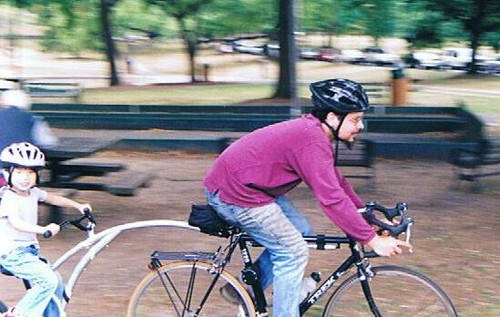|
|
Two more poems from the "el maestro de Tarca" series:
EL MAESTRO DE TARCA (â…¦)
Con el oÃdo atento
al fragor de las olas
y los vientos
el Maestro de Tarca
nos decÃa:
En el rencor del Lago
me parece oÃr
la voz de un pueblo.
|
EL MAESTRO DE TARCA (â…¦)
His ear turned, alert
to the clamor of the waves
and to the wind
el Maestro de Tarca
would tell us:
In the rancor of the Lake
I seem to hear
the voice of a nation.
|
EL MAESTRO DE TARCA (â…ª)
El maestro de Tarca
aconsejó al marinero:
Si tu pensamiento
alcanza menos
que tu corazón,
piensa dos veces:
La nave tiene
la vela a pájaros
y la quilla a peces. |
EL MAESTRO DE TARCA (â…ª)
El maestro de Tarca
gave counsel to the sailor:
If your thoughts
cannot reach
as far as your heart,
then think two times:
Your ships possess
a sail, like birds
and a keel, like fish. |
The four I have not yet made a stab at are going to remain untranslated for the nonce: #2 is a series of couplets about sailing conditions betokened by different cloud covers (after the manner of "Red sky at night, sailor's delight") -- I would not know where to begin with it. #5 warns of a tiny fish called La Pepesca, which will invade a sailor's body via his asshole and devour his innards. (Can't find any evidence pointing to this being a real thing? A couple of sites refer to the tetra astyanax fasciatus as "la pepesca" but they don't mention it being dangerous, which you'd think they would mention...) #6 is a long, attractive poem with advice for what to hunt and to cook during the summertime. #10 is similar to #2, but concerns sailing at night.Besides these, the maestro makes a brief appearance in one of the final poems of the book, "The Islands", which is dedicated to Ernesto Cardenal. Here he is telling the people of the Lake a legend of a once and future king:
-- En Solentiname,
archipiélago de las codornices
pereció Tamagastad
contra los escollos de la Venadita.
Allà lloró la tribu a su héroe.
Allà todavÃa lloran los que pasan
esperando una antigua promesa.
Allà dice la leyenda
que ha de volver a su pueblo
con una palabra nueva.
|
-- In Solentiname,
archipelago where quails nest
Tamagastad bled out his life
on the reefs of Venadita.
His tribe wept there for its hero.
And all who pass by there still weep;
they're waiting on an ancient promise.
For legend tells us there
that he must come back to his people
bearing a new word.
|

posted evening of Monday, July 11th, 2011
➳ More posts about Poets of Nicaragua
➳ More posts about Poetry
➳ More posts about Readings
➳ More posts about Translation
➳ More posts about Writing Projects
➳ More posts about Projects

Tamalgastad is featured in the legend of Nicaragua's founding, according to a piece on "The Deluge", by François Lenormant in the November, 1879 Contemporary Review -- I'm not finding much beyond that article and references to it.
Oviedo relates that Pedsarias Davila, governor of the province in 1538, charged P. Bobadilla, of the Order of St. Dominic, to inquire into the spiritual condition of those Indians whom his predecessors boasted of having converted in great numbers to Catholicism, which he, Davila, with good reason, doubted. The monk accordingly examined the natives, and Oviedo has transmitted several dialogues which show us the creed of the Nicaraguans a few years after the Spanish conquest. The following bears directly on our subject:—
Question by Bobadilla. Who has created heaven and earth, the stars and moon, man and all else?
Answer (by the Cacique Avogoaltegoan). Tamagastad and Cippatoval, the one is a man, the other a woman.
Q. Who created that man and woman?
A. No one. On the contrary, all men and women descend from them.
Q. Did they create Christians?
A. I do not know, but the Indians descend from Tamagastad and Cippatoval.
Q. Are there any gods greater than they?
A. No; we believe them to be the greatest.
Q. Are they gods of flesh or wood, or any other substance?
A. They are of flesh; they are man and woman, brown in colour like us Indians. They walked on earth dressed like us, and ate what Indians eat.
Q. Who gave them to eat?
A. Everything belongs to them.
Q. Where are they now?
A. In heaven, according to what our ancestors have told us.
Q. How did they ascend thither?
A. I only know that it is their home. I do not know how they were born, for they have no father nor mother.
Q. How do they live at present?
A. They eat what Indians eat, for maize and all food proceeds from the place where dwell the teotes (gods).
Q. Do you know, or have you heard tell, whether since the teotes created the world it has been destroyed?
A. Before the present race existed, the world was destroyed by water and all became sea.
Q. How did that man and woman escape?
A. They were in heaven, for that was their dwelling, and afterwards they came down to earth and re-made all things as they now are, and we are their issue.
Q. You say the whole world was destroyed by water. Did not some individuals save themselves in a canoe, or by some other way?
A. No. All the world was drowned, according to what my ancestors told me.
posted evening of July 11th, 2011 by Jeremy
| |
|
Drop me a line! or, sign my Guestbook.
•
Check out Ellen's writing at Patch.com.
| |

